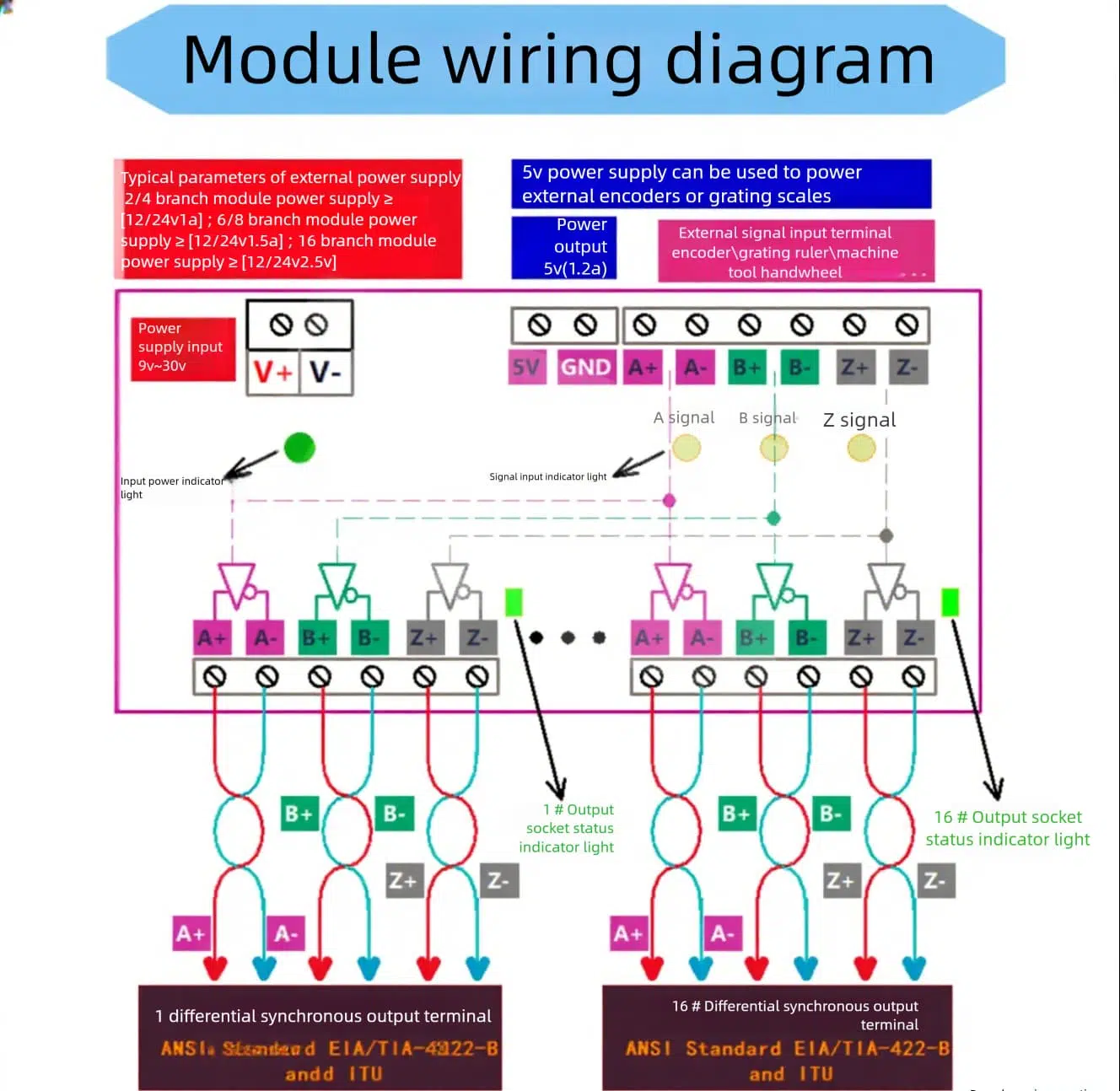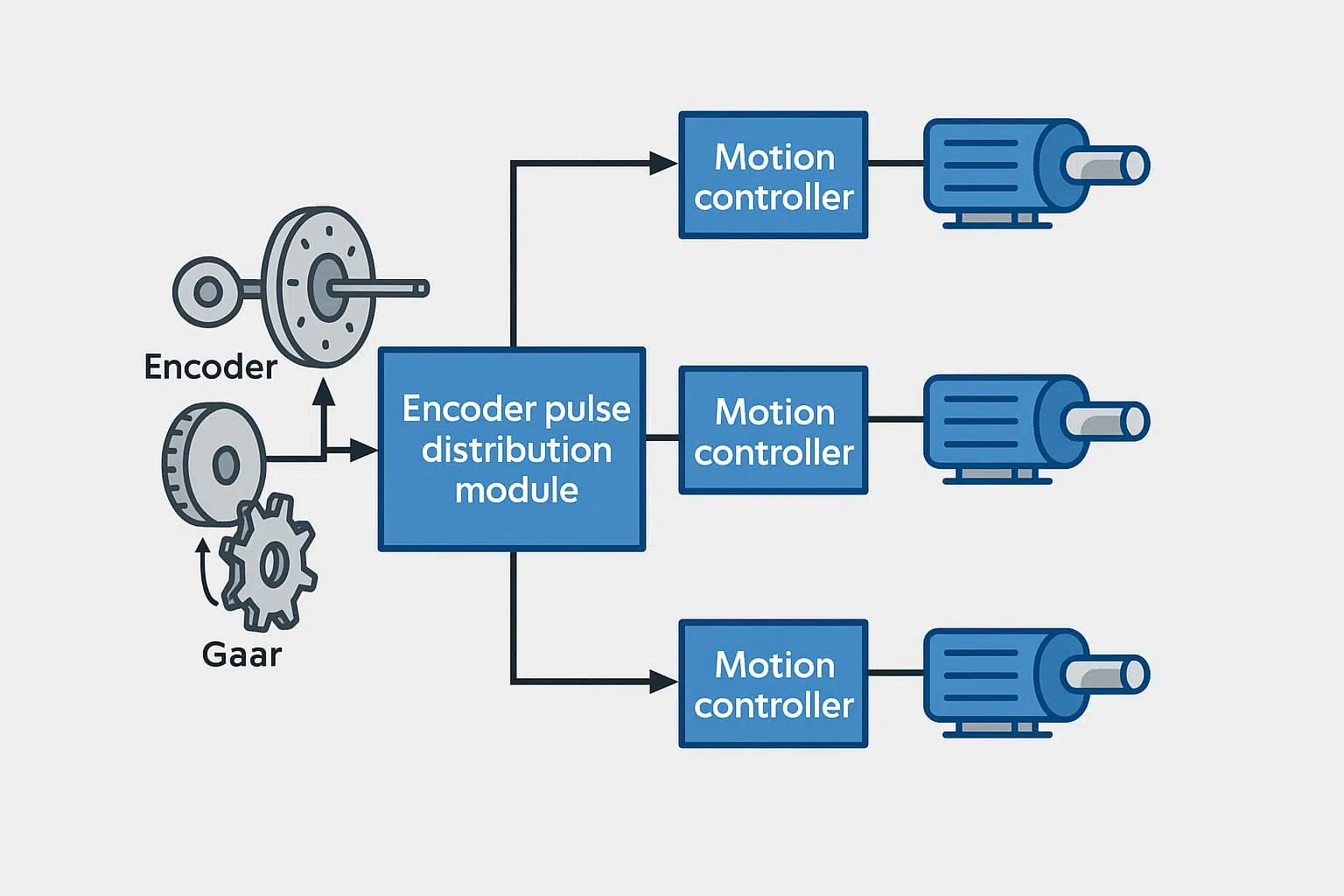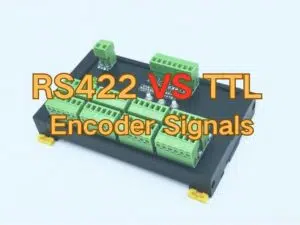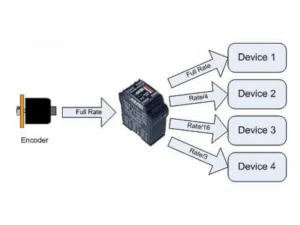In high-performance automation systems such as robotics, CNC machines, and packaging lines, synchronizing multiple servo axes is critical. A fraction of a millisecond delay between motors can cause vibration, misalignment, or product defects.
The solution lies in precise encoder pulse distribution for motion control — ensuring each axis receives identical, phase-aligned feedback signals. In this article, we’ll explore how encoder pulse modules maintain synchronization, prevent drift, and simplify complex multi-axis systems.
What Multi-Axis Synchronization Means
Multi-axis synchronization refers to the process of coordinating two or more servo motors so they move in perfect time with each other. Each motor relies on encoder feedback pulses (A, B, and Z channels) to determine its position, speed, and rotation direction.
In synchronized systems, all axes must reference the same pulse sequence. For instance, in a CNC milling machine, one axis may cut while another feeds the material — both must remain locked to a single master encoder signal to ensure consistent path accuracy.

Without uniform timing, servo controllers receive slightly offset signals, causing cumulative errors in speed and position. Even a few microseconds of delay can make two robotic arms move out of phase or distort the geometry of a CNC cut.
Challenges Without Proper Pulse Distribution
When encoder signals are shared incorrectly between drives or PLCs, several problems emerge:
| Issue | Descripción | Impact |
| Phase Drift | Timing shifts occur between pulses delivered to different axes. | Axes move out of sync, leading to mechanical errors |
| Time Delay | Unequal cable lengths and buffering cause some axes to lag. | Erratic motion, vibration, and loss of precision |
| Signal Degradation | Noise and voltage drops distort pulses, especially on longer wiring. | Missed pulses and feedback errors |
| Inconsistent Movement | Mismatched signals cause axes to move asynchronously, affecting product quality | Increased maintenance and downtime |
These effects result in inconsistent motion, audible servo chatter, or even encoder faults.
→ These timing issues often appear alongside Unstable Encoder Signals in PLC Systems, which explains in detail how wiring and grounding affect feedback accuracy.
In short, attempting to split encoder lines directly among multiple devices compromises precision and reliability — the opposite of what motion control systems require.
How Pulse Modules Keep Signals in Sync
Encoder pulse distribution modules solve these issues by providing:
- Equal-Length Outputs: All output channels carry pulses with the same electrical length, eliminating timing mismatches.
- Isolation: Outputs are electrically isolated to prevent noise and ground loop interference spreading between axes.
- Phase Matching: Signal phases on every output are carefully matched to ensure synchronous pulse delivery.
- Buffered Signals: Active amplification regenerates and strengthens pulses for consistent signal quality across devices.
This precise and isolated pulse delivery allows each servo feedback module in the system to operate with identical timing references.

Multi-Axis Encoder Module
- Model Number: EJ-XPUD
- 8 Equal-Phase Outputs
- Optically Isolated Differential Channels
- Ideal for Robotics and CNC Synchronization
- Supports RS422 and TTL Signal Standards
- DIN-Rail Mount with LED Indicators
This module ensures synchronized, noise-free encoder feedback across multiple servo drives or PLCs, making it ideal for complex automation systems where timing is critical.
Industrial Examples – Robotics and CNC
- Robotic Arm Synchronization
In robotic applications, multiple servo joints must move in harmony to achieve smooth motion. When two or more arms share one master encoder for reference, differences in cable delay or noise can cause slight timing errors that result in mechanical oscillations.
Installing an encoder pulse distribution module ensures that every servo amplifier receives identical A/B/Z pulses at the same phase. This stabilizes velocity control and produces smoother, coordinated movement — critical for robotic assembly, welding, or palletizing. - CNC Machine Tool Control
CNC routers and milling machines often coordinate linear and rotary axes simultaneously. For example, during circular interpolation, the X and Y axes must maintain strict timing relationships to create perfect arcs.
Without proper synchronization, tool paths deviate, creating surface imperfections. By distributing encoder feedback through a pulse module, all axes maintain identical phase references to the master encoder or spindle encoder, achieving sub-micron precision. - Packaging and Printing Systems
In web handling, film packaging, or printing lines, multiple rollers or cutters rely on synchronized feedback to maintain tension and register marks. Pulse distribution modules ensure stable, phase-matched control across every motor in the process.
Benefits – Precision and Maintenance
The adoption of encoder pulse distribution for motion control brings multiple key benefits:
✔️Higher Precision
Equal-phase outputs keep all servo axes perfectly synchronized. Each drive receives identical pulses, ensuring smoother motion and improved CNC cutting or robotic accuracy.
✔️Reliable Feedback
Isolated differential outputs prevent noise and signal interference, maintaining stable servo feedback in complex multi-axis environments.
✔️Easy Maintenance
Each channel has LED status indicators for quick signal checks. Technicians can identify issues instantly without complex testing.
✔️Modular Expansion
Modules can be easily added to support new axes, keeping system wiring consistent and reducing integration time.
✔️Longer Service Life
Buffered, isolated signals reduce load on encoders and drives, extending equipment lifespan and lowering maintenance costs.
Preguntas frecuentes
A1: It evenly distributes one encoder’s ABZ pulses to multiple servo drives, ensuring phase-synchronized feedback for smooth and accurate multi-axis motion.
A2: It regenerates and isolates encoder signals into equal-phase RS422 outputs, delivering identical timing pulses to every connected servo or CNC controller.
A3: Yes. One master encoder can drive several servo drives or PLCs through a pulse distribution module, maintaining equal timing and consistent feedback.
A4: Isolation prevents electrical noise and ground loops between drives, improving signal reliability, toolpath accuracy, and overall machine stability.
A5: They include LED signal indicators and modular outputs, making diagnostics easy and allowing engineers to expand or replace axes without rewiring.
A6: You can purchase encoder pulse distribution modules directly from AOSI Electrónica or authorized distributors. Models like EJ-XPUD support multi-axis servo and CNC synchronization.
Conclusión
In today’s high-speed automation systems, precision depends on timing. The encoder pulse distribution module ensures each servo axis receives clean, synchronized feedback, allowing robots, CNCs, and packaging systems to operate in perfect harmony.
By combining differential signal transmission, optical isolation, and equal-phase design, these modules eliminate the root causes of phase drift and instability — ensuring that every axis moves as one.





